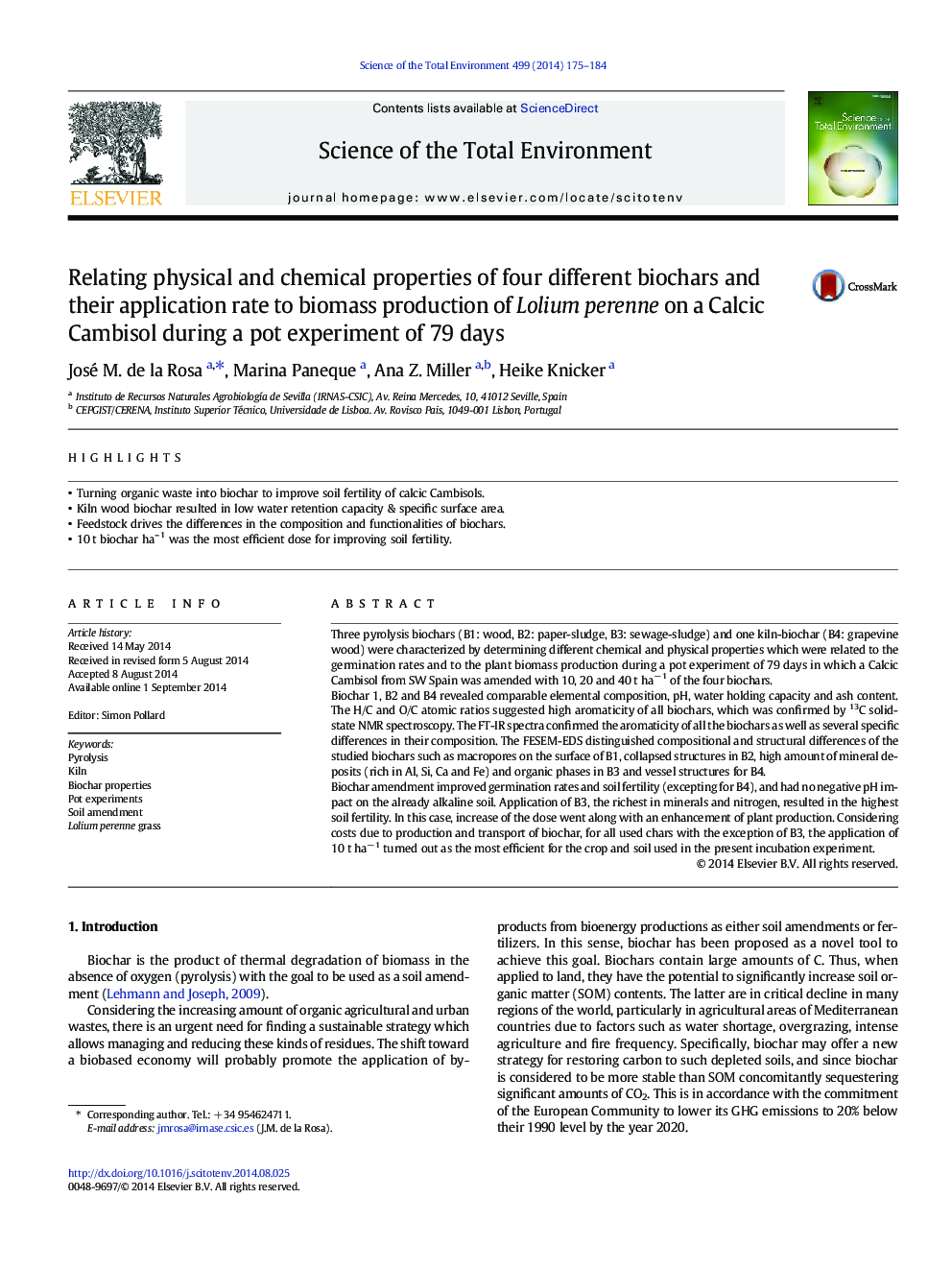| کد مقاله | کد نشریه | سال انتشار | مقاله انگلیسی | نسخه تمام متن |
|---|---|---|---|---|
| 6328886 | 1619774 | 2014 | 10 صفحه PDF | دانلود رایگان |
- Turning organic waste into biochar to improve soil fertility of calcic Cambisols.
- Kiln wood biochar resulted in low water retention capacity & specific surface area.
- Feedstock drives the differences in the composition and functionalities of biochars.
- 10Â t biochar ha-Â 1 was the most efficient dose for improving soil fertility.
Three pyrolysis biochars (B1: wood, B2: paper-sludge, B3: sewage-sludge) and one kiln-biochar (B4: grapevine wood) were characterized by determining different chemical and physical properties which were related to the germination rates and to the plant biomass production during a pot experiment of 79 days in which a Calcic Cambisol from SW Spain was amended with 10, 20 and 40 t haâ 1 of the four biochars.Biochar 1, B2 and B4 revealed comparable elemental composition, pH, water holding capacity and ash content. The H/C and O/C atomic ratios suggested high aromaticity of all biochars, which was confirmed by 13C solid-state NMR spectroscopy. The FT-IR spectra confirmed the aromaticity of all the biochars as well as several specific differences in their composition. The FESEM-EDS distinguished compositional and structural differences of the studied biochars such as macropores on the surface of B1, collapsed structures in B2, high amount of mineral deposits (rich in Al, Si, Ca and Fe) and organic phases in B3 and vessel structures for B4.Biochar amendment improved germination rates and soil fertility (excepting for B4), and had no negative pH impact on the already alkaline soil. Application of B3, the richest in minerals and nitrogen, resulted in the highest soil fertility. In this case, increase of the dose went along with an enhancement of plant production. Considering costs due to production and transport of biochar, for all used chars with the exception of B3, the application of 10 t haâ 1 turned out as the most efficient for the crop and soil used in the present incubation experiment.
Journal: Science of The Total Environment - Volume 499, 15 November 2014, Pages 175-184
